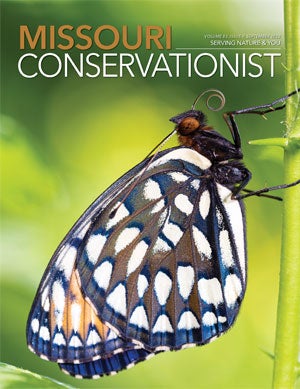
If you happen to spot an orange-and-black butterfly flutter over a prairie, like most people, your first thought might be, it’s a monarch butterfly. But you may want to take a second look. It could be a rare regal fritillary butterfly (Speyeria idalia).
Once common in Missouri, regal fritillary butterflies have now become a rare sight. Of the 16 species of Speyeria, only three live in Missouri.
The greatest threat to the regal fritillary is habitat fragmentation. Once covering nearly one-third of America, prairies have become rare and is one of the most endangered ecosystems in the world. While Missouri was once covered by 15 million acres of tallgrass prairie, today 99 percent of tallgrass prairie has been lost. The impact of the loss was felt by specialist species, like the regal fritillary, that depend on plants found only in this habitat.
The larval food source for the regal fritillary and all members of the genus Spreyeria are violets. Various violet species are associated with the different areas of the regal fritillary’s range; however, the bird’s-foot violet (Viola pedata) and the prairie violet (Viola pedatifida) tend to be the preferred larval food source for the regal fritillaries in Missouri. While monarch butterflies can adapt to both field and meadows during their long migration, regal fritillaries are restricted to tallgrass prairies and stay in Missouri as caterpillars until spring. As adult butterflies, however, they may feed on a variety of nectar plants such as milkweed, coneflower, blazing stars, bergamots, clovers, goldenrods, and ironweeds.
Drastic declines in regal fritillary populations have led to concern about the butterfly’s future. However, due to a two-year project, regal fritillary butterflies might have a fighting chance. MDC, with help from Missouri State University (MSU), is examining the butterfly’s reproduction, developing methods to raise them in captivity, and introducing them to suitable sites.
Regal Fritillary: In Four Stages
Regal fritillary butterflies have four stages in their life cycle. They are also univoltine, which means they only reproduce a single generation per year. Adult butterflies emerge in June and mating takes place in late June and early July. After mating, females enter a six-to-eight-week period of reproductive diapause, and oogenesis does not initiate until late August. Once oogenesis takes place during a fall season, the eggs are fertilized and soon after, oviposition occurs.
A female can lay more than 2,000 eggs during her life span. The small larvae hatch in late September and into October. Immediately after hatching, the tiny larvae seek protective covering in the leaf litter and overwinter there. At this stage, the larvae delay development over the winter months, and this is known as larval diapause. Once spring arrives, the larvae emerge and begin feeding on violets.
It takes about a month for a regal fritillary butterfly to mature, in comparison to other species like monarch butterflies that can go from an egg to chrysalis in just two weeks. While most butterflies will overwinter as an egg or a pupa, which are more stable ways to overwinter, fritillaries overwinter as caterpillars. They grow and mature through six instar stages until late May when they pupate. Adults emerge in June, males first, followed by females about two weeks later, and the cycle starts over again.
Tending to the queen of the prairie
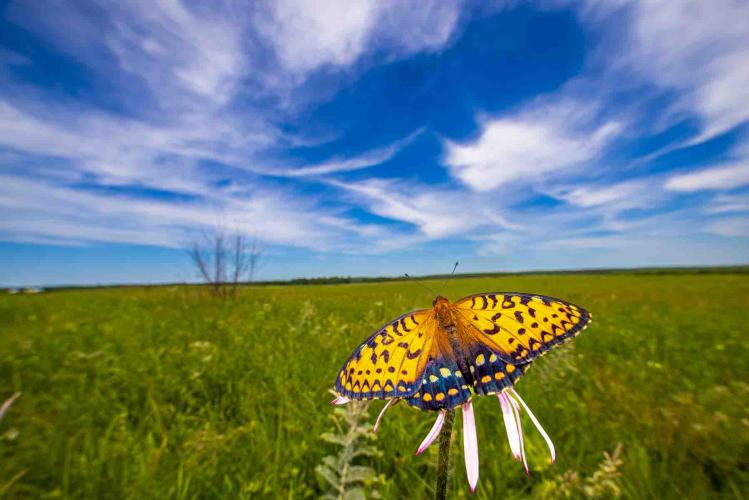



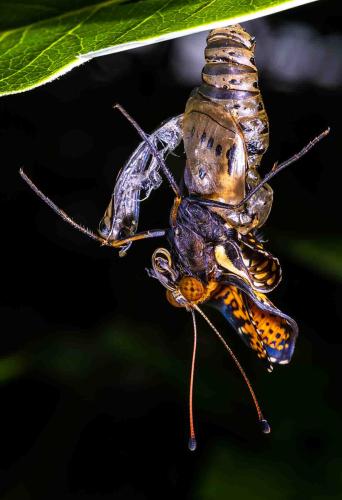






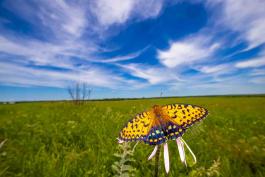
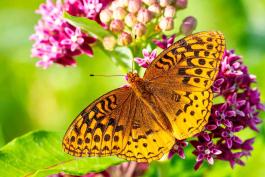
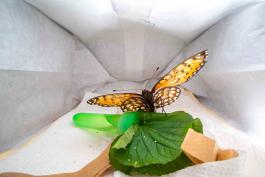


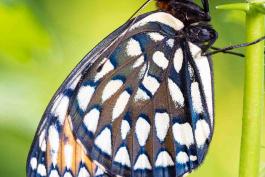

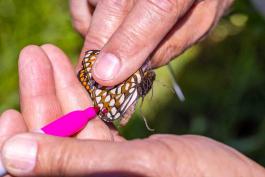



Also In This Issue

Finding space in your yard for native plants.
And More...
This Issue's Staff
Editor - Angie Daly Morfeld
Associate Editor - Larry Archer
Photography Editor - Cliff White
Staff Writer - Kristie Hilgedick
Staff Writer - Joe Jerek
Staff Writer – Dianne Van Dien
Designer - Shawn Carey
Designer - Marci Porter
Photographer - Noppadol Paothong
Photographer - David Stonner
Circulation Manager - Laura Scheuler






















